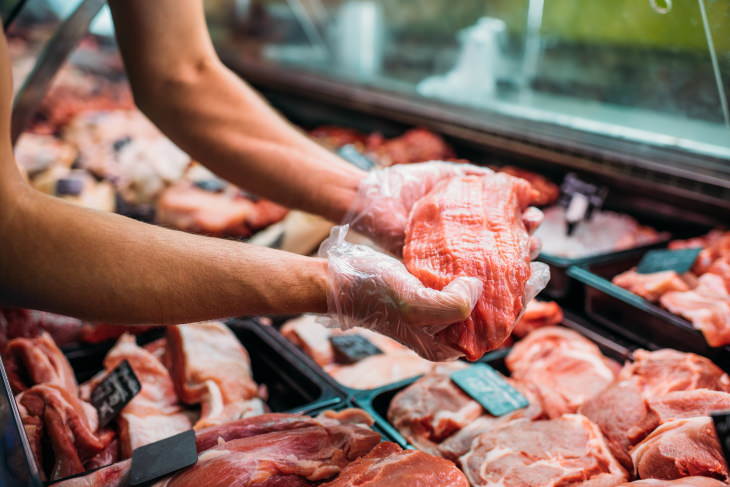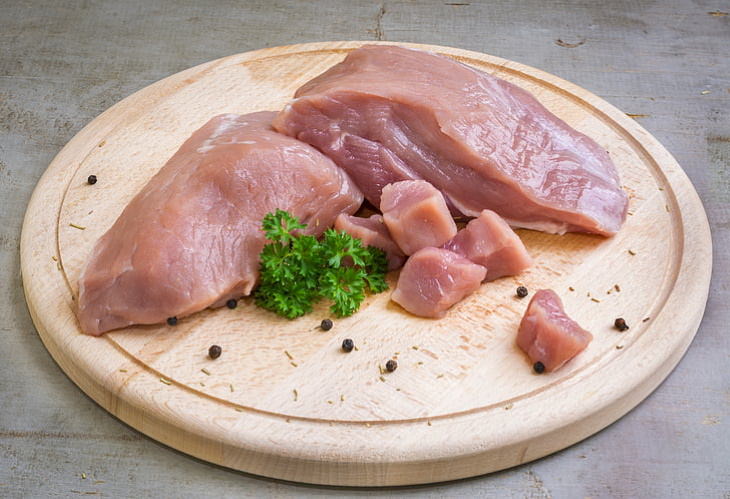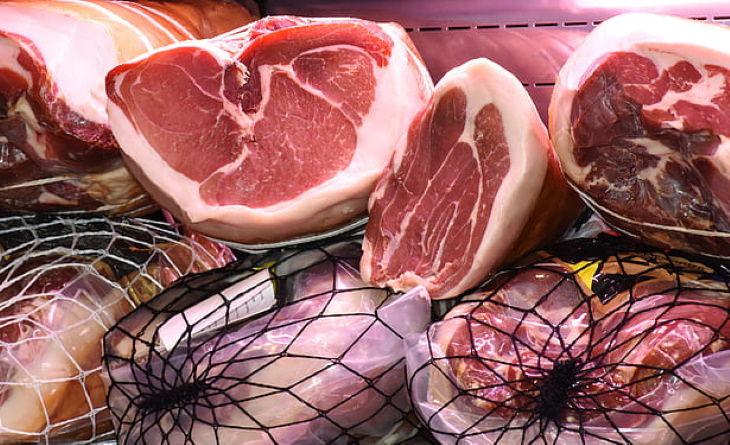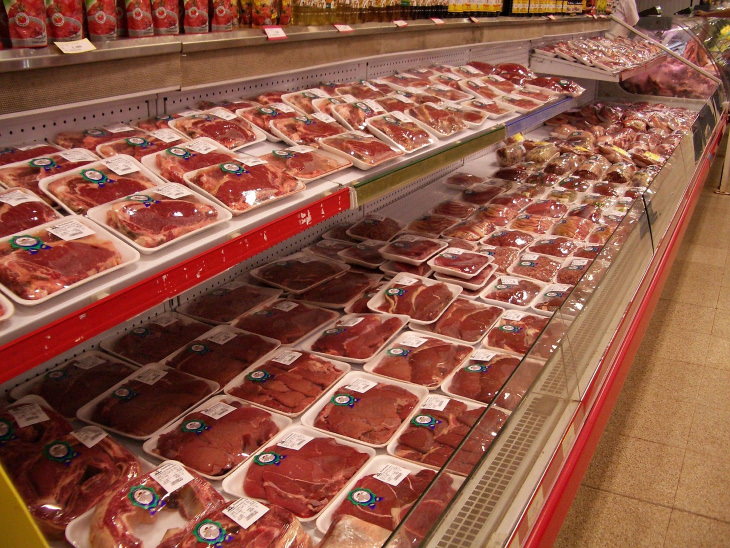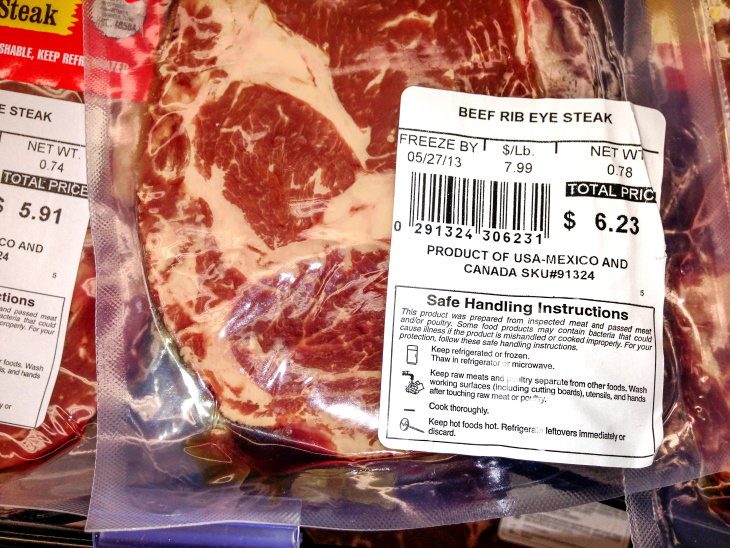1. Learn to visually predict the texture
The next time you're looking for a nice and tender piece of red meat, take a closer look at the surface of the cut, specifically at the meat fibers. The direction in which these fibers go can predict whether or not the meat will be tender. When buying beef for steak, it's typically best to select a piece cut across the muscle fibers, which means that you should not notice any fibers at all - this will ensure that the meat will end up being tender even with a short cooking time at high temperatures.
If the meat is cut along the meat grains and you can see long muscle fibers, it is more likely to be on the tougher, but also on the more flavorful side. These cuts will work better for stews, pulled beef, and soups, as they will impart a lot of savory flavor to the dish, and the long cooking time will ensure that the meat will end up soft and tender.
Related Article: Don't Discard These 10 Cuts of Meat!
2. How’s the color?
The color of the meat can tell you a lot of information about the freshness and the quality of the meat as well. However, what color is considered optimal for red meat won't work for poultry, for example, so let's look at each type of meat separately.
When purchasing chicken, turkey, or another type of poultry, the meat color can vary from a bluish-white and light pink to a darker pink and even a yellowish pink. All of these colors are fine for poultry, as the bird's diet has a big effect on the color of the meat - chicken fed mostly with corn can have a naturally yellowish hue, for example. That said, stay away from greyish and dull-looking poultry cuts - the dull, grey tone shows that the meat is not fresh.
As for red meat, its color will depend on the freshness and storage conditions, too. All quality red meat is on the darker side, but the color itself can vary from purple and red to brown. The freshest red meat is purplish in tone, and with time, as the meat is being exposed to oxygen, it turns to a bright red and then to a brown color. All of these color variations are safe to eat, but paleness and grey hues may also be a sign that the meat is too old or hasn't been stored properly.
Finally, fresh pork meat has a light pink color, while fresh game is nearly always dark brown.
3. Pay attention to the cut and appearance
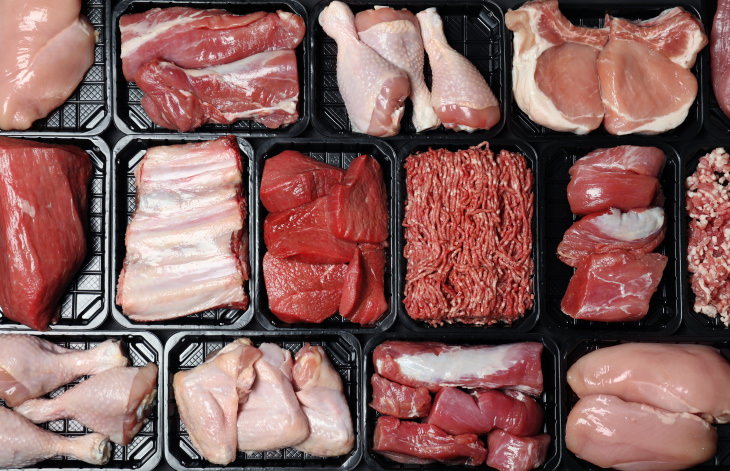
As we've already briefly explained, the way the meat is cut makes all the difference. Apart from the direction of the meat fibers, though, a good quality piece of meat should also have a generally more attractive and neat appearance. This means that the cuts should look smooth and even (as opposed to jagged) and uniformly-sized. These are hints that there are no small bones in the meat and it makes the meat preparation much easier for you.
It's also important to pay attention to the overall texture of the meat. Fresh, quality meat should always be firm and have a dry surface. If the meat looks watery, slimy, or sticky, irrespective of the meat variety, don't buy it, as it has likely gone bad. Also, pay attention to the muscle fibers themselves - fresh and high-quality meat should be dense and uniform. If the meat looks as if it's falling apart and is uneven, it means it will also not cook well because it wasn't handled or grown properly.
Related Article: How to Tell the Difference Between Cheap & Expensive Meat
4. Take a sniff
While strolling through the meat aisle or assessing a suspicious piece of meat in your fridge, always trust your sense of smell. If the grocery shop's meat aisle (or the meat you bought) smells pungent or sour by any stretch of the imagination, it may point that the meat isn't fresh. In the store, it can also point to poor handling and storage, and it's safer not to buy meat there.
Some fresh meat, such as chicken breasts, for example, shouldn't smell at all, but pork, goat, or beef may have a natural smell that some people may not find pleasant. Still, most of us are able to subconsciously distinguish the natural smell of the meat itself from the smell of, well, disintegrating flesh.
5. Count the protein
It's no secret that eating meat is probably the easiest way to add enough protein into your diet. But contrary to popular belief, red meat isn't the most protein-dense meat-type at all. Turkey breasts, for example, contain more protein than the two most famous high protein foods - chicken breasts and steak. Therefore, take a close look at the nutrition label of the specific meat you're buying and see just how much protein it contains.
6. The fat content is important, too
We're so used to thinking that animal fat equals bad that we're forgetting one more important part of the puzzle - more animal fat also equals more flavor and thus a more satisfying meal. In red meat, the extra fat is called marbling, and fine marbling always equals to a juicier and more tender piece of meat. So, it's fine to opt for chicken thighs and fattier cuts of steak from time to time, as long as it doesn't turn into your daily menu and you're also adding a healthy serving of veggies on the side.
7. Is the meat stored properly?
This is one part of the meat shopping experience nearly all of us tend to disregard completely, but without proper storage, how can you trust that the meat you're buying is fresh and properly handled? After all, if the business is allowing themselves to have bad freezers and customer care upfront, it's also likely that they're not following storage and hygiene guidelines in the back and the meat they are selling isn't just not fresh or high quality, but it may also be tainted.
So, take a close look at the freezers wherever you're used to buying meat - are they clean? are they dripping, or maybe they're warmer than usual? If you suspect that there is a problem with the freezers and the temperature of the meat isn't maintained properly, it's best to buy your meat elsewhere.
8. Look closely at the packaging
Like the storage facilities, the way the meat is packaged also reflects the handling standards of a specific facility - if you see any dirt, fingerprints, or tears in the packaging, this is a red flag that may point to the possibility of food contamination. Apart from that, there should also be a clearly-stated use by date on the packaging, which shows you the date by which the meat will likely become spoiled.
This should not be confused with the sell-by date - which is usually a few days earlier than the use by date - this is the date by which the business can safely sell the product and allow the consumer to have a few days to use the meat. If you're planning on freezing or not using the meat immediately, search for the latest sell-by date you can find to make sure that the meat is still fresh whenever you end up using it.
9. Don’t be afraid of frozen meat
We often think that the frozen meat we buy at the supermarket is somehow less fresh than the one we can get in the fresh meat section, but the truth is that the vast majority of the meat you can buy has been previously deep frozen to ensure it doesn't spoil on its way to the distributor, be it a butcher's shop or a supermarket.
Therefore, buying frozen meat is just as good as buying fresh meat, especially if you're not planning on using the meat up immediately. For a comparative guide on how to thaw meat, read our previous article titled Should You Thaw Meat in Water, or in the Microwave?
Share these tips with those who might use them!

